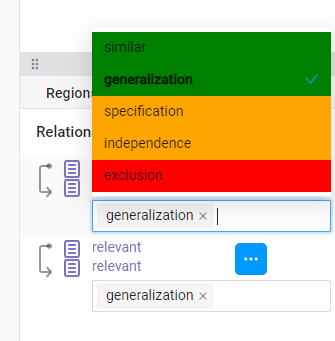| Version 17 (modified by , 18 months ago) (diff) |
|---|
Natural Language Inference
Annotation manual
The following sentences are descriptions of photographs (machine translated from English to Czech). You cannot see the photos, however, you can imagine their content.
The aim is to decide for each pair of sentences (premise and hypothesis) whether:
- the hypothesis follows from the premise (entailment)
- the hypothesis cannot follow from the premise (contradiction)
- the hypothesis neither follows nor does not follow from the premise (neutral)
- one or both sentences from the pair do not make sense (bad translation)
The annotation is made via the LabelStudio tool. The procedure requires a double login process.
First, log into the tool using the credentials obtained by email (student@localhost).
Next, log into the assigned data packages using your faculty credentials (x..../password).
How to annotate one sample
1. Rule out bad translations
Read the premise and hypothesis and decide whether they make sense. If not, select bad translation and continue. You can check your understanding by revealing the original texts.
2. Decide the sentence relationship
If the sentences make sense, decide whether the relation between them is entailment, contradiction, or neutral.
Please assume that the hypothesis and the premise are connected. For example, if the premise says something about a man and the hypothesis mentions a human, assume they are the same entity in the picture.
Also, use common sense when judging the impossibility of following. For example, if the premise says "a man rides a bicycle", and the hypothesis says "the man is washing his hands", annotate it as false, even though you can imagine someone washing his hands while riding a bike (being a very uncommon situation).
Typically:
- If the hypothesis is a more general statement than the premise, the result is entailment.
- If the premise adds new information or denotes an element of a hypothesis by a more specific name, it is neutral (cannot say).
- If the hypothesis and the premise describe a non-related action with different actors or they describe mutually exclusive actions, it is a contradiction.
3. Select relevant parts
After deciding the sentence relationship, support your selection by selecting the relevant part in the premise, hypothesis, or both.
Click on the relevant button under the premise or hypothesis.
Mark one or more words (the tool selects whole words and removes trailing spaces from the selection).
In case of entailment, mark the elements that are the same thing but are described with different words.
In case of contradiction, mark the elements that are mutually exclusive (e.g., man-woman) in the premise and hypothesis.
In case of neutral, there is often some new information in the hypothesis, for instance a more specific term (woman-human) or some independent term.
It can happen that there are no such elements.
4. Create a supporting relation
Set up the relation between the elements in the premise and hypothesis. Click the relevant element in premise (1), select the Info tab and click the Create relation button, a chain icon (2). Next, click the relevant part in the hypothesis (3).
Select the relation type: click on the Relations tab, and select the relation by clicking the triple dot button. Next, click into the Select labels box and select a relation.
In the case of entailment, the relation would be green, i.e., generalization or similar. In the case of contradiction, the relation would be red, i.e., exclusion. In case of neutral, the relation would be orange.
Submit
Finally, Submit your annotation.
Further information
You can check the instructions by using the Instructions button on the top when you need it.
Attachments (7)
- annotation.png (53.8 KB) - added by 18 months ago.
- annotation_instruction.png (54.9 KB) - added by 18 months ago.
- annotation_submit.png (55.4 KB) - added by 18 months ago.
- entailment1.png (11.4 KB) - added by 18 months ago.
- entailment2.png (25.9 KB) - added by 18 months ago.
- entailment3.png (47.8 KB) - added by 18 months ago.
- entailment4.png (16.1 KB) - added by 18 months ago.
Download all attachments as: .zip







